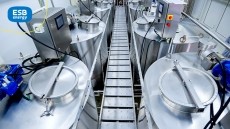Food industry identified as bioinformatics boom

Bioinformatics has traditionally been used in the pharmaceutical sector for drug discovery and development. However, Richard Holland, group business officer at Eagle Genomics, said major food firms were increasingly using the technology, as costs fell.
Published scientific papers show that the brewer Heineken recently worked with Delft University in the Netherlands using bioinformatics to analyse yeast genomes to develop better strains.
Genetic sequencing
And Danone funded research at Imperial College, London. This used genetic sequencing on infants’ stools to assess nutritional variations in trial participants specifically the impact of prebiotic oligosaccharides on enteral tolerance in preterm infants.
Holland, whose firm analyses the genomic data resulting from bioinformatic studies, said: “Until now, almost all of this work focused on human health, but the lower cost of genetic sequencing is making it more suitable for a range of other industries."
While the number of people directly working in this area in the food industry was still very small, Holland said even the biggest food companies had only “two or three” people looking at it. He predicted that it would gain greater attention over the next five years.
“It is particularly useful to assess yeasts and bacteria-based products such as yogurts and nutritionally enhanced food.
“While it is probably too early in the development of the technology for smaller firms to justify the cost now, this will certainly change over time,” Holland added.
‘Pretty effective but relatively slow’
He also highlighted food safety testing possibilities. The current process of taking samples to a lab and running them through diagnostics was “pretty effective but relatively slow”, he said.
Using bioinformatic software, a food manufacturer would be able to test for a specific “dangerous” gene regardless of what strain it was carried in, because the test would sequence the whole population of bugs.
This could eventually be done via a laptop on the factory floor, he predicted.


















